Wednesday, 12:10pm
21 May 2025
Serendipity and self-discovery
Briar Levit: On design, feminism, and friendship
By Briar Levit and Nina Paim. Book design: Tereza Bettinardi. Edited by Franca López Barbera. Proofreader Sacha Fortuné. Printing by Gráfica Maiadouro, Porto. Production by Calote Esférica Cultural Association. Co-published by Bikini Books and Clube do Livro do Design, £14. Reviewed by Amy HenryA new book covers Briar Levit’s multi-faceted practice and the lessons she learned along the way. Reviewed by Amy Henry
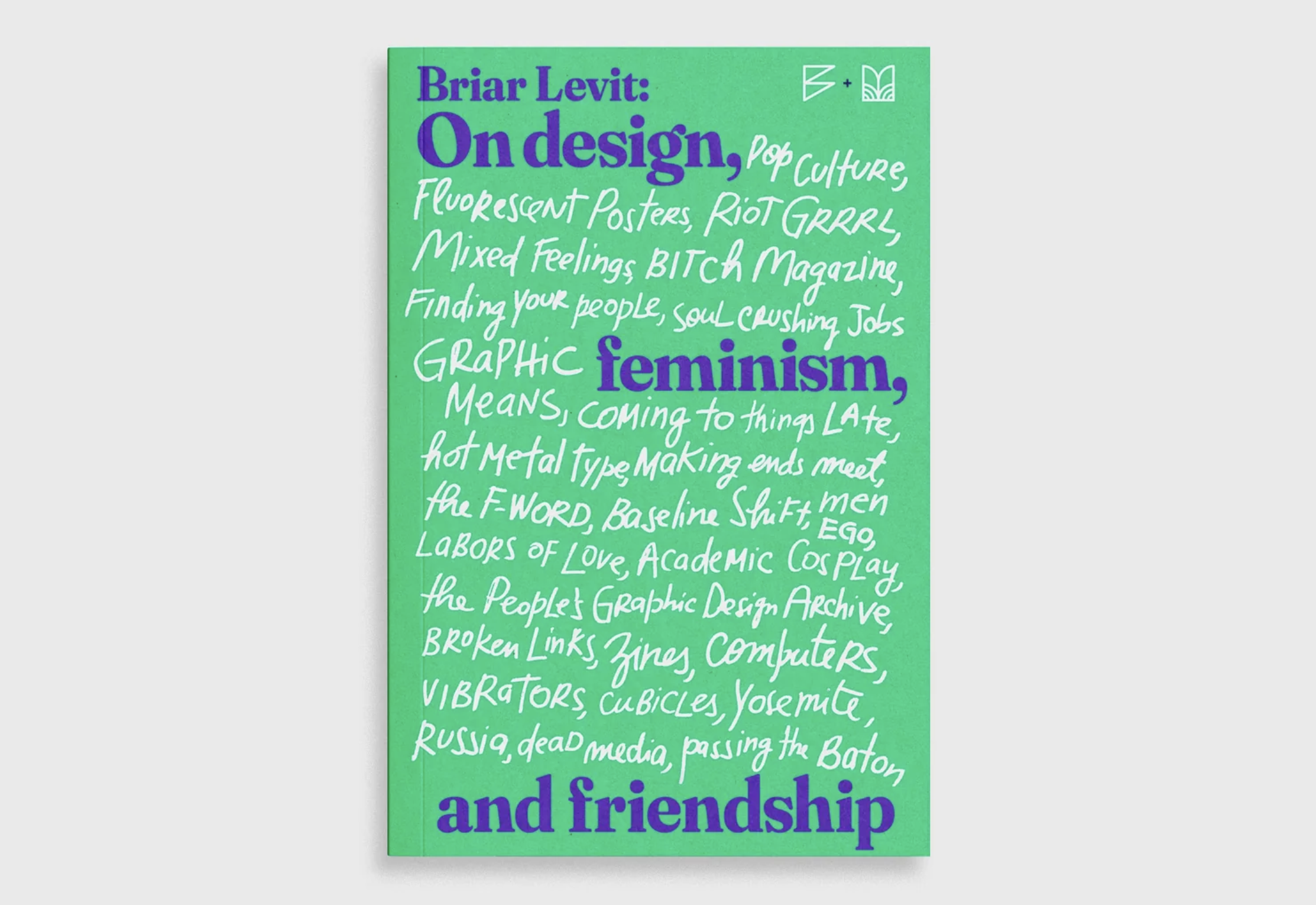
This striking pocket-sized book opens with American graphic designer and educator Briar Levit’s experience during her attendance at the 2017 Women’s March in Washington D.C., writes Amy Henry. The march drew more than 500,000 people, part of a worldwide protest prompted by the misogynistic policy positions and rhetoric of newly inaugurated US President Donald Trump.
The introduction is a timely reminder of the current déjà vu situation in 2025, and a focus on a feminist and activist practice is a common thread throughout the book, with Brazilian designer, curator and editor, Nina Paim (see ‘Designers are only human’), who facilitates an intimate conversation with Levit about the roots of her feminist practice and her thoughts on the relationship between design and feminism.
With a biographical, political and feminist lens, this book, as part of the Marginalias series (from Clube do Livro do Design in Brazil and Portuguese publisher Bikini Books) includes an abundance of images that visually narrate the work being discussed, along with the rich history, inspiration, travel and people that influenced Levit’s prolific career since her upbringing in the San Francisco Bay Area of Northern California. The questions, prompted by Paim, help wind the readers through Levit’s time at San Francisco State University in the early 2000s, where an interest in exhibition design was sparked by a visit to Muir Woods National Monument. Upon seeing a diorama of massive redwoods in the visitor’s centre, Levit thought: ‘What if I was someone who made these?’
Above: The cover of Briar Levit: On design, feminism, and friendship, designed by Tereza Bettinardi. Right: A spread from the book featuring Levit’s favourite cover of Bitch magazine.
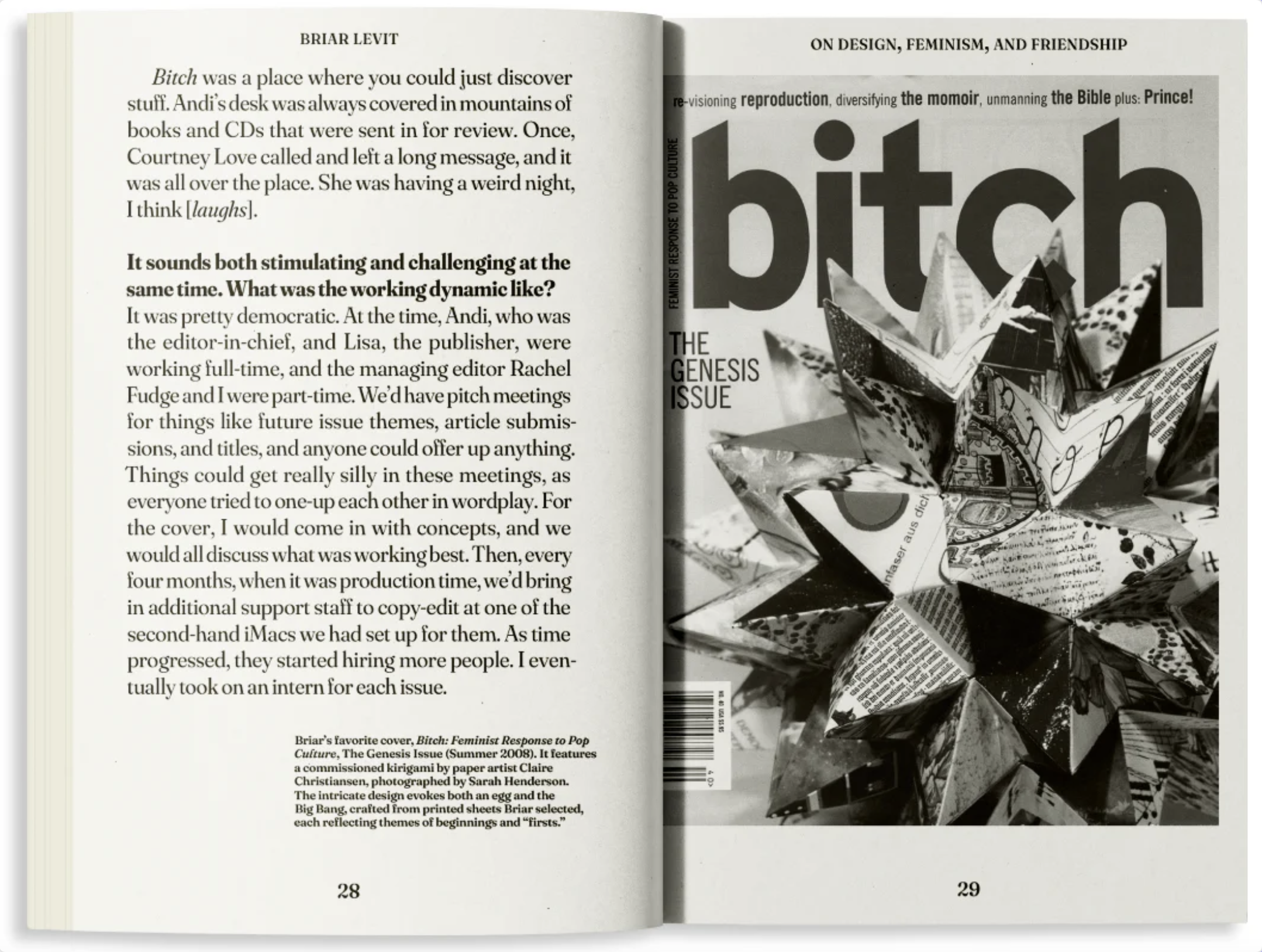
Split into three sections, the publication includes Levit’s candid description of her journey through a multi-faceted practice of designing, writing, teaching, editing, directing and archiving (which deeply resonated with me as a multi-disciplinary designer and educator).
In the first section, Levit talks about her love of all things pop culture sparking her experience as art director at the renowned magazine Bitch: Feminist Response to Pop Culture. Bitch was founded in 1996 in Oakland, where she reports having received the bulk of her feminist education, working alongside editor-in-chief Andi Zeisler, publisher Lisa Jervis and art director Ben Shaykin. She also chronicles her time completing her master’s degree in communication design at Central Saint Martins in London in 2004, along with a shift into teaching at Portland State University in 2007 after moving back to the West Coast.
In the second section, Levit and Paim discuss the shift in political climate and increase in activism for herself and her students that resulted from the outcome of the 2016 US election, and the need for community building within that time and space.
A spread from the book. Briar Levit (left) and friend Angela Huerta at the Women’s March in Washington, DC on 21 January 2017.
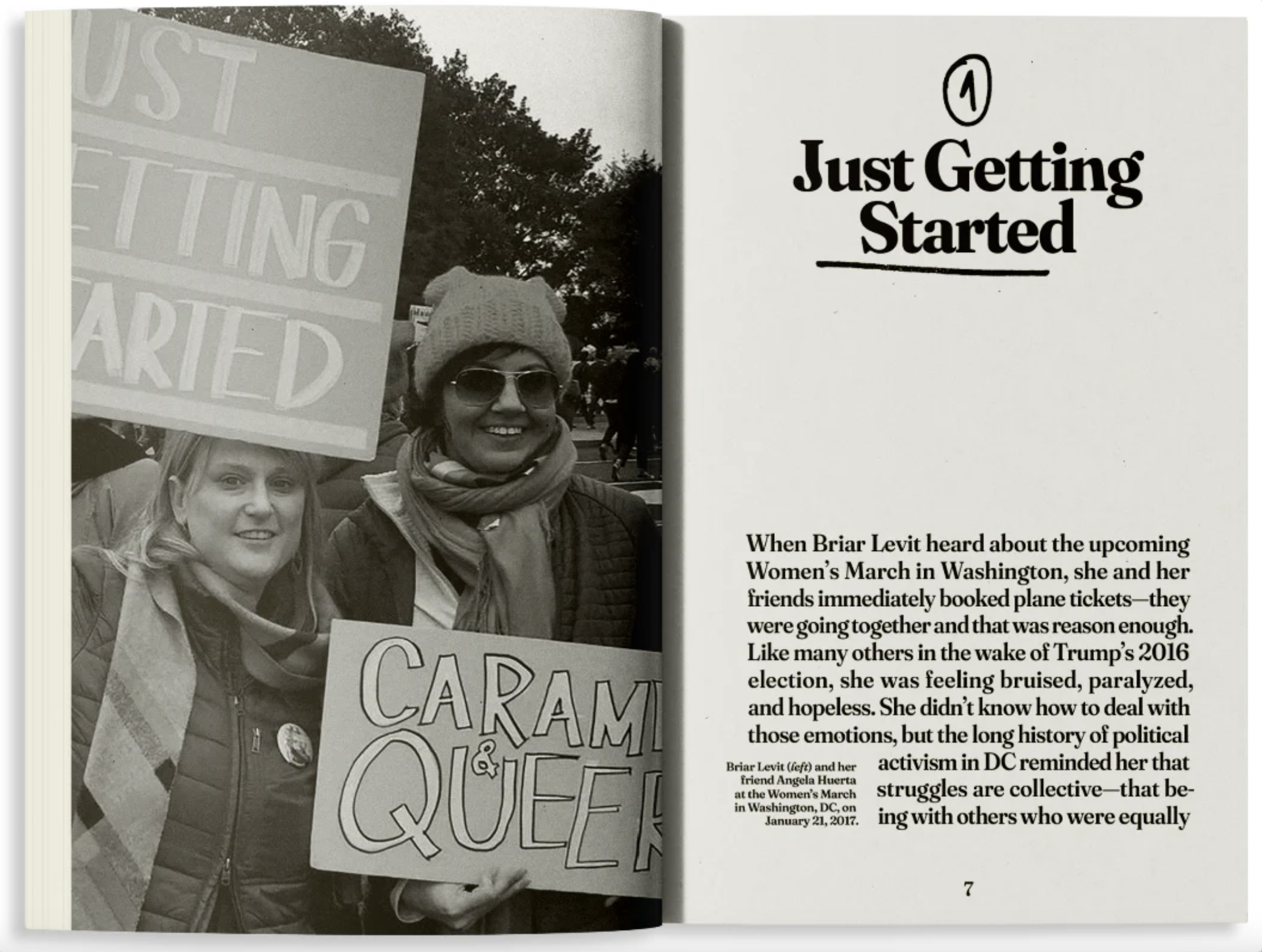
She also describes her passion for thrift shopping old books and design ephemera. This appetite for history evolved into multiple projects, namely her role in directing the 2017 feature-length documentary film Graphic Means: A history of graphic design production (see ‘We Made This: Technical challenge’ in Eye 95) where Levit provides a logistical look into the process of creating the project that explores the history of pre-digital graphic design production until the advent of the desktop computer from the 1950s to 1990s, while (inadvertently) highlighting gender roles and inequality in the workplace.
A spread from the book. Some of Levit’s entries for The People’s Graphic Design Archive.
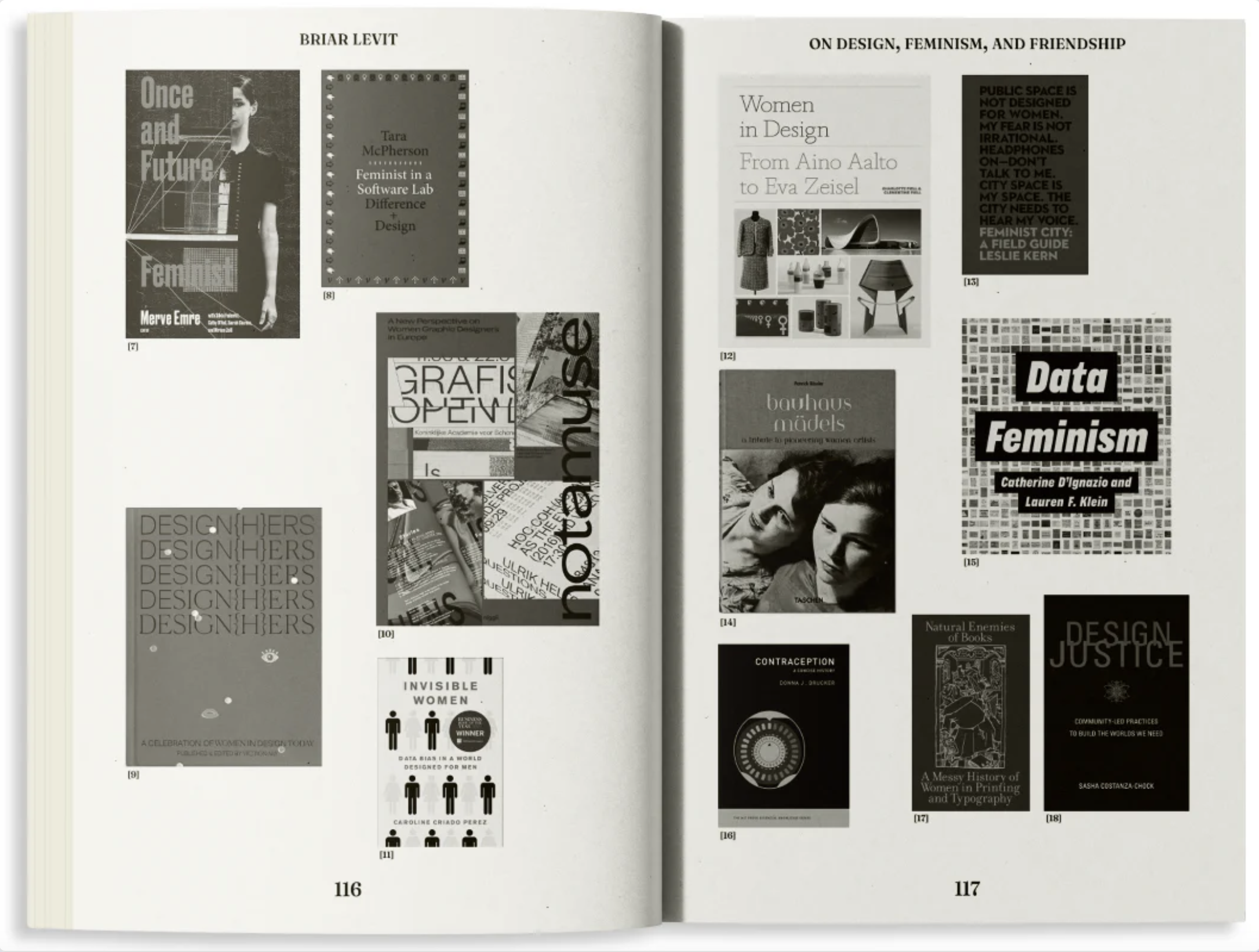
In the third section, Levit explains how her multitude of projects and interests inform one another, all in relation to her ever-evolving teaching practice. She recounts her involvement with the People’s Graphic Design Archive, ‘a crowd-sourced digital archive of graphic design’, after being in contact with the archive’s co-director Louise Sandhaus. Levit also discusses the project Baseline Shift: Untold Stories of Women in Graphic Design (see the review ‘Unfinished Narratives’ in Eye 103), which was interwoven with much of the information she had previously encountered when researching for Graphic Means.
Ultimately, a narrative of serendipity and self-discovery through trials and tribulations emerges, with Levit describing her research as ‘not just a job – it’s a calling, something we carry with us for as long as we can remember’.
The book is also available in Portuguese.
Amy Henry, designer, writer, educator, London
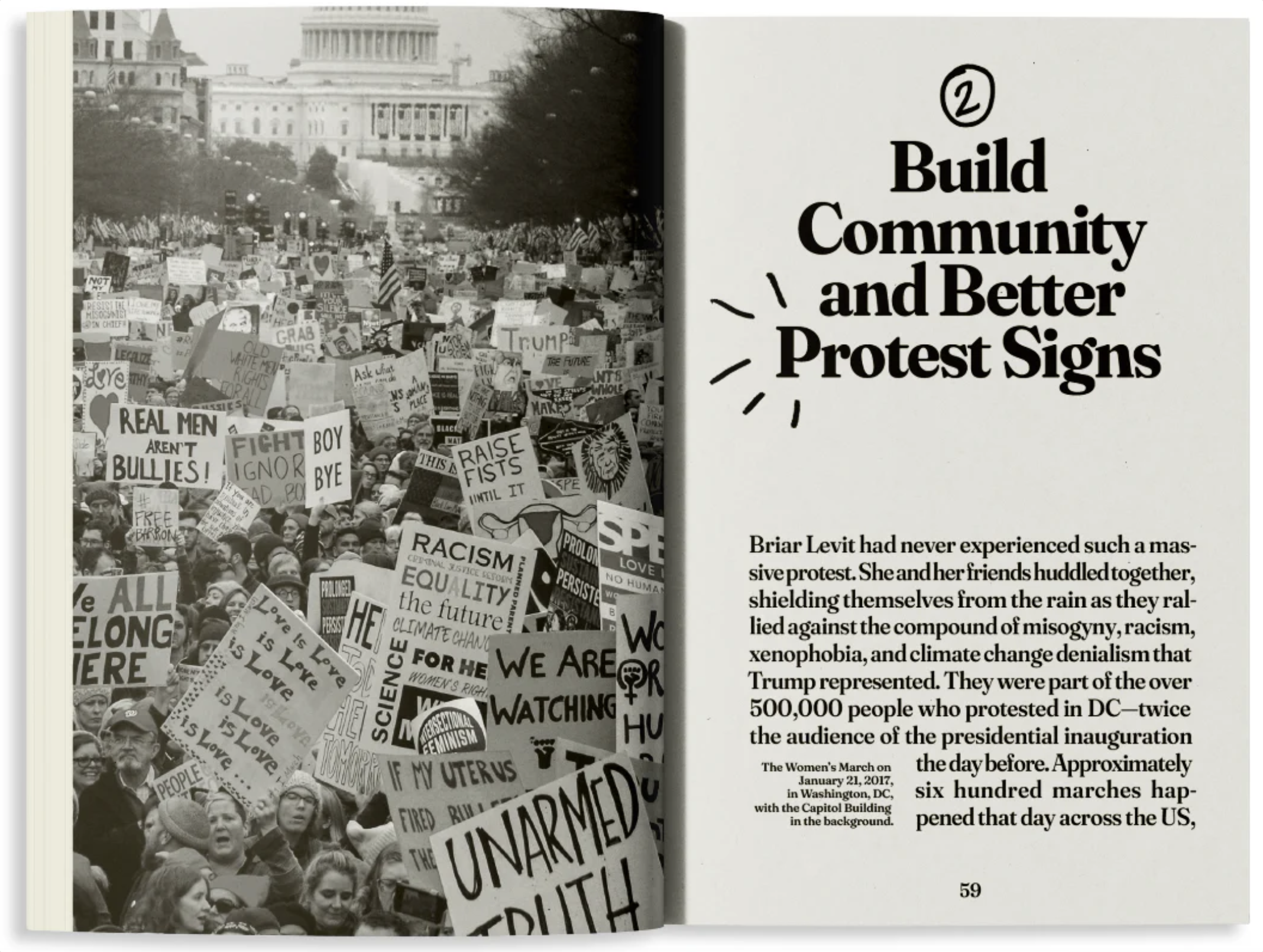
Eye is the world’s most beautiful and collectable graphic design journal, published for professional designers, students and anyone interested in critical, informed writing about graphic design and visual culture. It is available from all good design bookshops and online at the Eye shop, where you can buy subscriptions and single issues.
